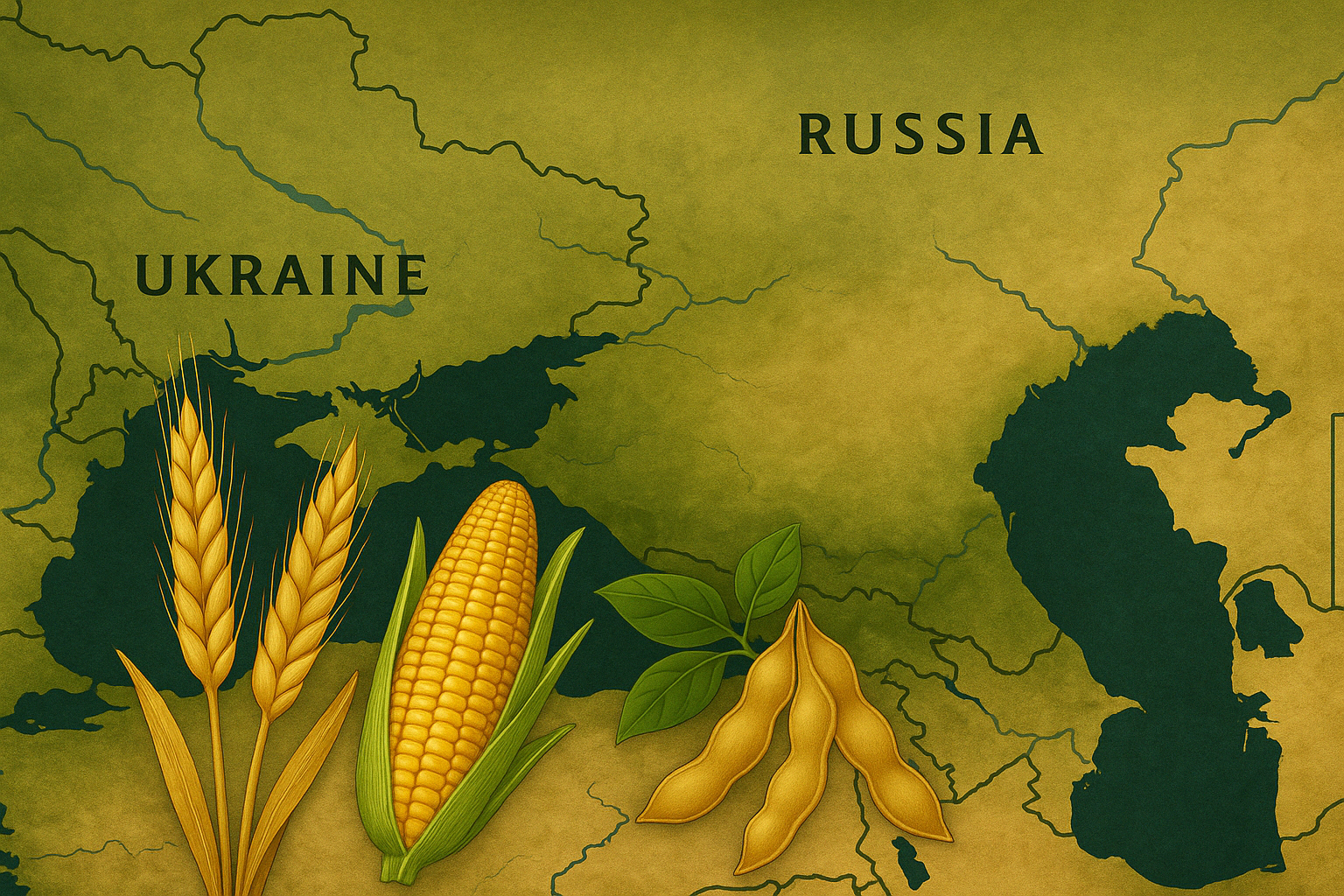Price Recovery and Tight Supply in Ukraine
Ukraine experienced a significant domestic price rally during the 2024/25 season, with grain prices increasing by nearly 1.5 times. This surge stemmed from a dry summer, high export activity (mainly front-loaded early in the season), and broader global uncertainty. Even as international wheat prices stayed stable and corn climbed 12% globally, Ukrainian domestic supply contracted considerably by late season due to aggressive early sales. Despite war-related logistics challenges, exports remained strong, especially for corn and oilseeds, keeping Ukraine a leading feed grain supplier to the EU.
The spring planting campaign in Ukraine is progressing well for grains like barley and wheat, though sunflower sowing remains behind the five-year average by nearly 30%. Soil moisture deficits and delayed sowings in oilseeds may lead to increased price volatility depending on rainfall in May.
Russia: Export Outlook Strong, But Risks Persist
Russia continues to influence global wheat balances significantly. SovEcon raised its 2025–26 wheat export forecast to 39.7 million tons, buoyed by improved growing conditions. However, structural issues remain. Domestic prices remain high, and export quotas and duties are discouraging planting expansion. Exports to key buyers like Turkey have slowed, while competition in Algeria has intensified.
Drought in the south and cold snaps remain real risks that could derail this outlook, even if short-term export figures remain stable. Despite internal pricing adjustments, Russian wheat prices on international markets are holding firm, signaling resilience and potential export strength in the near term.
Romania Takes the European Export Lead
Romania emerged as the top EU grain exporter in the 2024/25 marketing year, with over 7.1 million tons of grain shipped by April 20, 2025. Its wheat exports alone accounted for more than 4.7 million tons, mainly to Egypt, Saudi Arabia, and Jordan. Barley and corn followed, with key buyers including Turkey, Israel, and Lebanon. Romania has outpaced France, Germany, Lithuania, and Poland, benefiting from its strategic Black Sea ports and favorable logistics.
Looking ahead, Romanian wheat forward quotes have dipped below last season’s floor levels, prompting speculation that prices could rebound later this season. Soil moisture remains a concern, especially as May rainfall will be crucial for yield formation.
Bulgaria and the Shifting Trade Dynamics
Bulgaria’s influence on the wheat market has weakened after losing ground in the Indonesian market and facing intensified competition in traditional destinations. While the country continues to play a role in EU corn and wheat exports, its corn acreage is expected to shrink due to persistent drought fears, following a regional trend also seen in Romania.
Nonetheless, Bulgaria remains central in the upcoming launch of CME’s new Black Sea wheat contract. Set to begin trading in June 2025, the contract will be tied to export prices in Romania’s Constanta and Bulgaria’s Varna and Burgas ports. It represents a significant attempt to provide greater pricing transparency and hedging tools in a region previously dominated by Russian-linked indices now obsolete due to the war in Ukraine.
Oilseeds: Ukraine’s Strategic Bet
Ukraine’s oilseed sector has shown impressive resilience and strategic advantage. Despite rising input costs, cultivating sunflowers, soybeans, and rapeseed remains profitable. April exports of vegoils and meals remained strong, with domestic rapeseed stocks largely cleared.
Ukraine has solidified its position in the Turkish sunflower oil market, although it has lost some ground in India and China, where Russian exporters are gaining market share. Ukraine’s robust processing industry gives it a crucial edge, enabling more domestic value-added output amid global trade disruptions.
The rally in sunflower seed prices across the Black Sea and Danube reflects tight domestic stocks and uncertainty over planting areas, particularly in Ukraine where weather delays are concerning.
Danube Basin and Weather Watch
Both the Black Sea and Danube basins are heading into May with strong crop prospects but heightened weather risk. Winter crops such as cereals and rapeseed avoided frost damage due to an abnormally warm winter. Still, persistently low soil moisture means that rainfall in May is essential to secure yields for the 2025 harvest.
Regional reports confirm optimism, but any worsening of the drought could derail these expectations and impact forward contracting.
Strategic Outlook
The Black Sea region remains central to the global grain matrix, but its role is shifting. Ukraine’s strong front-loaded export model is now facing stock exhaustion. Russia continues to act as a volume anchor for wheat, but logistical, policy, and weather hurdles persist. Romania and Bulgaria are growing in prominence, not just as exporters but as price reference points for global trade.
CME’s new contract tied to Constanta and Varna marks a pivotal development in regional grain pricing. If successful, it could reduce dependence on unstable Russian benchmarks and better reflect the region’s evolving dynamics.
Meanwhile, oilseed trade and biofuel trends—particularly declining U.S. soybean oil use and aggressive Ukrainian sunflower exports—will be critical in shaping both pricing and demand in the 2025/26 season.
In summary, the Black Sea region stands at a crossroads: resilient yet vulnerable, competitive yet constrained. The next few months—particularly rainfall patterns and geopolitical stability—will define its trajectory in global grain trade.

